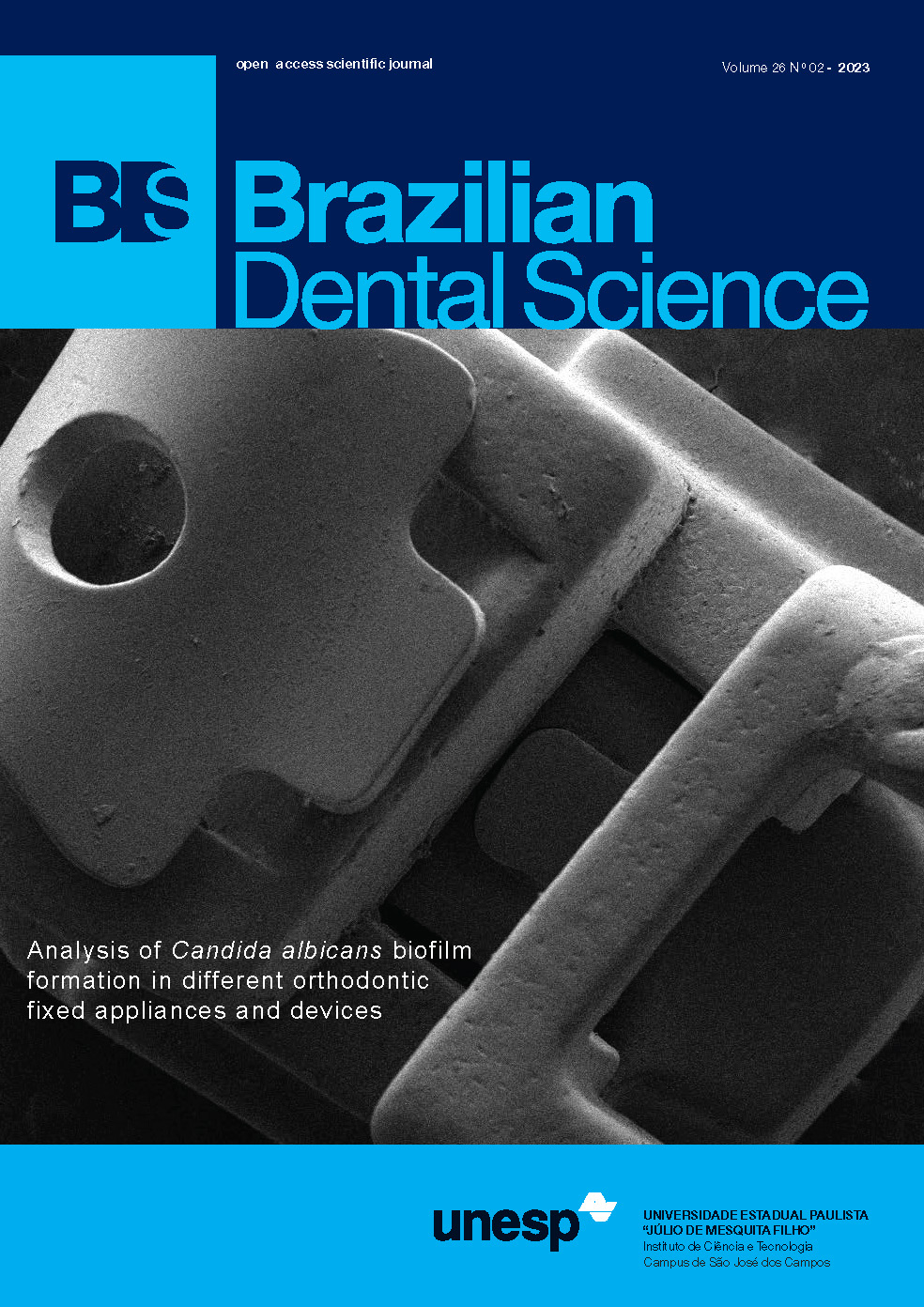Cherubism in Saudi population: a rare case report
DOI:
https://doi.org/10.4322/bds.2023.e3698Abstract
Cherubism is a rare hereditary benign fibro-osseous disorder characterised by bilateral swelling of the mandible and/or maxilla with varying severity of involvement. It occurs because of dominant mutations in SH3BP2 gene on the chromosome 4p16.3. On radiography cherubic lesions appear as multilocular cystic radiolucencies in the jaw bones giving a soap bubble appearance. These lesions usually heal by themselves by the time the patient attains puberty. Treatment is necessary only in aggressive cases where there is severe facial deformity or vital functions are hampered. Surgical corrections are preferred when the lesion is in its dormant phase. The aim of the present case report is to illustrate a case of cherubism in a 9-year-old Saudi boy which is a very rare occurrence as only 1 case of cherubism has been reported so far in the Saudi Arabian population.
KEYWORDS
Cherubism; Genetic mutation; Multilocular cystic lesions; Self-regressive lesion; Calcitonin therapy.
Downloads
Published
How to Cite
Issue
Section
License
Brazilian Dental Science uses the Creative Commons (CC-BY 4.0) license, thus preserving the integrity of articles in an open access environment. The journal allows the author to retain publishing rights without restrictions.
=================




























